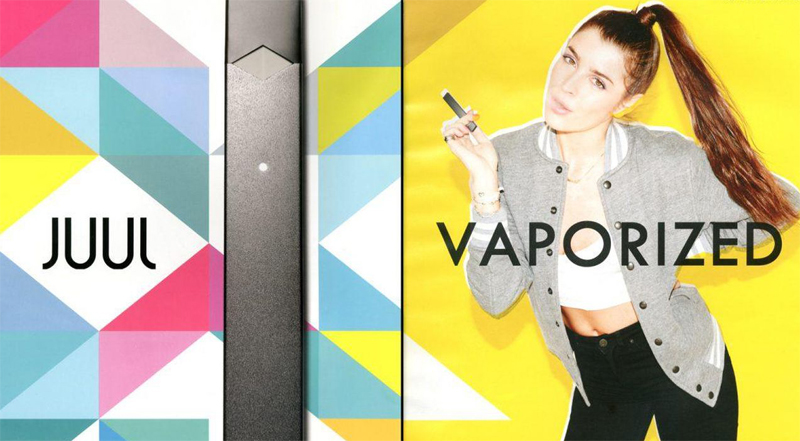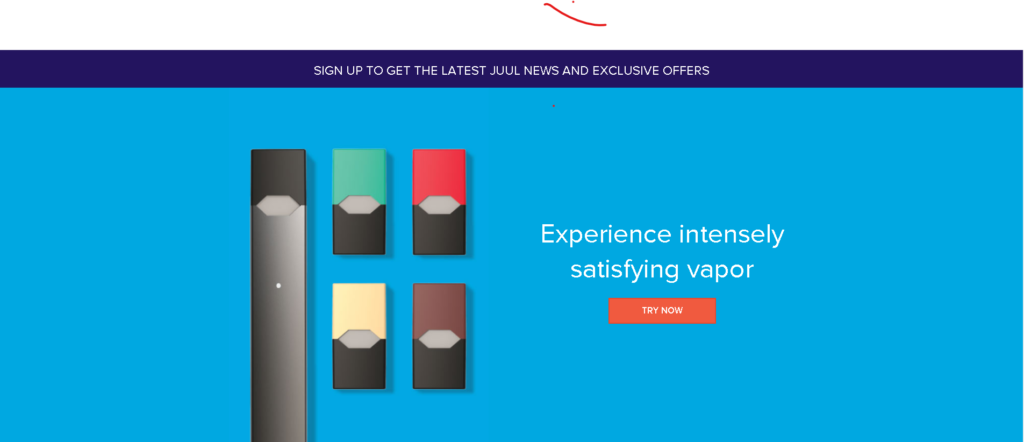What’s The Deal With Juuls in Schools?
Twenty-Seven
Percent.
That’s the percentage of high school students who have used a tobacco product, according to the FDA’s National Youth Tobacco Survey of 2018. In 2017, that statistic didn’t even break 20%. And according to the same report, some start even sooner – with 4.9% of middle schoolers admitting to using an electronic cigarette – up 48% from the year previous. In total, the survey estimated that 5 million youth would use a tobacco product that year, 1.5 million more than the year previous. It also showed that youth were by far more likely to turn to Electronic Cigarettes, or E-Cigs, than any other tobacco product – 3.6 million of the total 5 million users noted the E-Cig as their primary deliverance method.

This is far from a normal rise in smoking rates, especially after the total number of smokers in the U.S. has dropped over 25% over the past 10 years. But keep in mind that the most popular form of tobacco use wasn’t the ‘normal’ cigarette but the E-Cig. So what makes this E-Cig so appealing, particularly to American youth?
One reason may stem from the convenience of an E-Cig over its paper ancestor. As the name would imply, E-Cigs take the basic concept of a cigarette – a paper tube in which tobacco is packed – and mechanized it.
Although different brands of E-Cigs contain different internal components, most units typically contain a small lithium battery, a microprocessor, a sensor, an atomization chamber, and a cartridge filled with a liquid nicotine solution. When a user places their mouth on the end of the device and inhales, the sensor will detect the movement of air and inform the microprocessor, which will activate the atomization chamber. From within the chamber, a small coil is quickly heated to high temperatures, vaporizing an amount of the liquid nicotine solution – this is the same vapor that the user will inhale.
This compact design causes E-Cigs to have a number of advantages over their paper predecessors, most prominent of which is the lack of ‘smoke’. Since the E-Cig doesn’t need any additional fuel for its fire, the total amount of gas produced by the device is greatly diminished. And while this is a perk that benefits all potential smokers, it holds extra weight for the young, who’ll look to hide their habits from parents, teachers, or other adult figures.
Less smoke equals less evidence, which is a big draw to the sneaky, rebellious teen. For the potential newcomer, the E-Cig’s production of vapor rather than smoke reduces the throat burn of taking a puff for the first time. Finally, the reduction of smoke paired with use of ‘flavored’ nicotine cartridges eliminates the stench usually associated with smoking and replaces it with a pleasant, even fruity odor.
The digital storefronts from which these devices can be purchased also play their own part in making these products more appealing to teens. While it is true that all sites selling these products do disclose that their products contain nicotine and ask that users be 21 or older before browsing (As required by law), the sites appear to be designed to dodge as much of the negative stigma associated with “smoking” as possible.
The first of several ways they accomplish this is through their careful linguistic choices when describing their products. Nicotine refills are referred to as “vape juice” and the retailers more frequently feature ‘Vape Pens’ or ‘Vaporizers’ than E-Cigs.
The only difference between the two is in the delivery method of the nicotine solution: While E-Cigs use a disposable cartridge, ‘Vaporizers’ allow the liquid to be dropped into a small tank. But by minimizing their use of the words ‘smoke’, ‘nicotine’ and ‘cigarette’, these new gizmos can further distance themselves from smoking.

Many of these digital retailers use similar layouts and tactics to make their storefronts look fresh and cool, but the one that appears to market most directly to teens is Zamplebox. Not only is this site’s nicotine warning fairly easy to ignore, but its landing page also uses images of young, attractive models spending time together while using their products.
But they’re not the only one: Juul, a new brand of mini vape pens with an unassuming appearance that makes them highly concealable, has gained so much traction among the American youth in the past couple of years that they came under fire by the Food & Drug Administration in 2018 for suspected marketing towards younger audiences.
Michael Siegel, who studies tobacco use, feels the new Juul may be an even bigger threat to American youth than E-Cigs before it. He believes the increased threat comes from advancements in the Juul’s mechanism when compared to an E-Cig – a boost that allows the nicotine to be transferred more effectively.
“The first time they [the kids] use it, they feel the nicotine, they’re more likely to stick with it,” Mr. Siegel told New York Times. “We’re starting to see kids who literally are showing signs of addiction: They’re using it alone, we’re seeing kids who have to sneak off to the bathroom during the day.”
Juul was also the recipient of a large amount of public flack due to the nature of their first marketing campaign. The campaign portrayed young, attractive models holding the device while appearing cool, confident or happy.

These images contained little to no information on what a ‘juul’ is or what the device does. But Juul heard the backlash, and their 2019 marketing campaign has seen the minimum age of the models in their ads raised from 21 to 35.
The ads now feature a calmer, more muted color palette, and are clearly aimed at an audience of cigarette smokers who might be interested in making a switch.
Their website has undergone a similarly dramatic transformation, which can be witnessed by way of an online service that allows users to ‘archive’ certain webpages, save them to the site, and access them again at a later date, even if the current page has changed. This free service, ‘The Wayback Machine’, allows us to compare Juul’s 2017 site layout to its current webpage.
The difference is staggering: The 2017 layout features NO warning that the device contains nicotine, does NOT ask users if they are 21 years old or older, uses highly saturated colors reminiscent of a smartphone ad, and praise the “satisfying flavor” of the vapor as the device’s biggest highlight.

However, the top results for ‘Juul ads’ are still those from their more youth-centric campaign, suggesting the new wave of marketing has yet to significantly shift the company’s public perception.